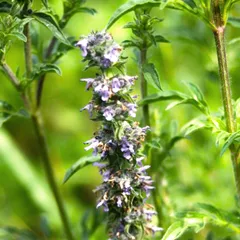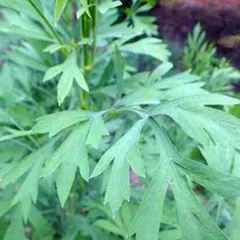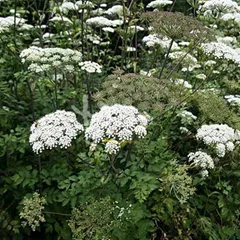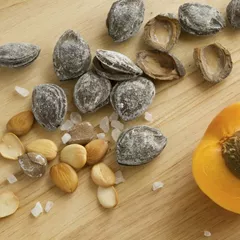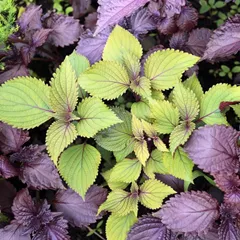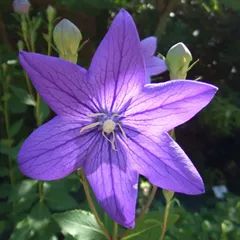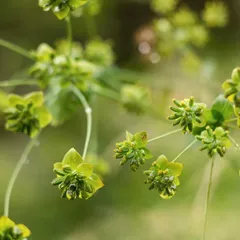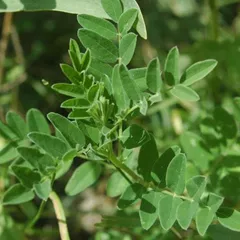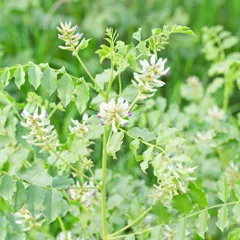Ren Shen Bai Du San
Ren Shen Bai Du San
Chinese: 人参败毒散
Pinyin: Rén Shēn Bài Dú Sàn
Other names: Ginseng Powder to Overcome Pathogenic Influences
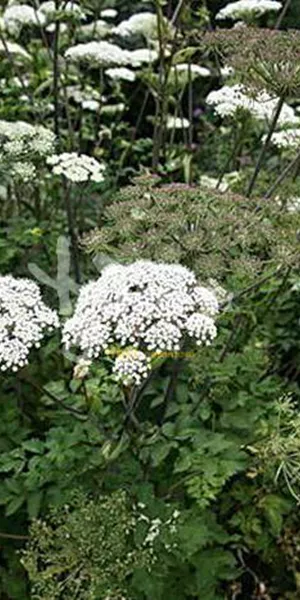
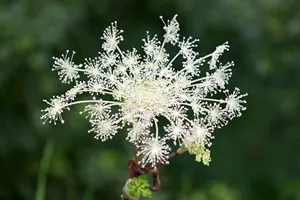
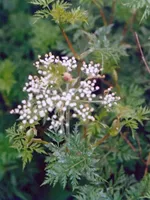
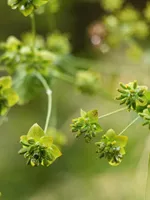




Ren Shen Bai Du San
Ren Shen Bai Du San
Chinese: 人参败毒散
Pinyin: Rén Shēn Bài Dú Sàn
Other names: Ginseng Powder to Overcome Pathogenic Influences
Number of ingredients: 12 herbs
Formula category: External formulas for External disorders
Conditions for which it may be prescribed: MumpsBoilsEczema and six other conditions
- Releases the Exterior
- Dispels Wind and Dampness
- Augments Qi
Contraindications: Contraindicated for Heat or Damp Heat cases due to the warming and drying... Contraindicated for Heat or Damp Heat cases due to the warming and drying actions of the many ingredients. see more
Source date: 1119 AD
Source book: Craft of Medicines and Patterns for Children
The information provided here is not a replacement for a doctor. You shouldn't use it for the purpose of self-diagnosing or self-medicating but rather so you can have a more informed discussion with a professional TCM practitioner.
Ren Shen Bai Du San is a 12-ingredient Chinese Medicine formula with Notopterygium Roots (Qiang Huo) and Pubescent Angelica Roots (Du Huo) as principal ingredients.
Invented in 1119 AD, it belongs to the category of external formulas for External disorders. Its main actions are: 1) releases the Exterior and 2) dispels Wind and Dampness.
In Chinese Medicine health conditions are thought to arise due to "disharmonies" in the body as a system. These disharmonies are called "patterns" and the very purpose of herbal formulas is to fight them in order to restore the body's harmony.
In this case Ren Shen Bai Du San is used by TCM practitioners to fight patterns like Wind-Cold-Damp invading with Qi Deficiency. From a Western Medicine standpoint, such patterns can give rise to a range of conditions such as common cold, influenza or mumps for instance.
On this page, after a detailed description of each of the twelve ingredients in Ren Shen Bai Du San, we review the patterns and conditions that Ren Shen Bai Du San helps treat.
The twelve ingredients in Ren Shen Bai Du San
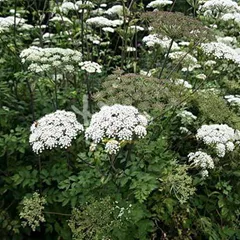
Qiang Huo is a king ingredient in Ren Shen Bai Du San. Like the name indicates, it means it has more power than other ingredients in the formula.
1. Notopterygium Roots (Qiang Huo)
Qiang Huo dispels Wind Cold from the Exterior, dispels Dampness and alleviates
pain. It treat the symptoms of fever and chills without sweating, headache, and common pain and soreness.
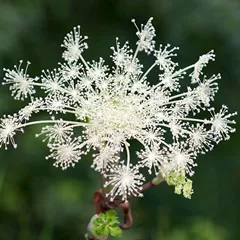
Du Huo is a king ingredient in Ren Shen Bai Du San. Like the name indicates, it means it has more power than other ingredients in the formula.
2. Pubescent Angelica Roots (Du Huo)
Part used: Dried root
Nature: Warm
Meridian affinity: BladderKidney
Category: Herbs that dispel Wind and Dampness
Du Huo dispels Wind Cold from the Exterior, dispels Dampness and alleviates
pain. It treat the symptoms of fever and chills without sweating, headache, and common pain and soreness.
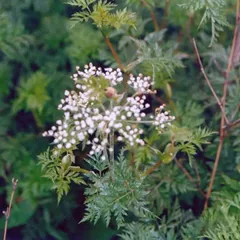
Chuan Xiong is a deputy ingredient in Ren Shen Bai Du San. This means it helps the king ingredient(s) treat the main pattern or it serves to treat a coexisting pattern.
3. Szechuan Lovage Roots (Chuan Xiong)
Part used: Dried rhizome
Nature: Warm
Taste(s): Pungent
Meridian affinity: GallbladderLiverPericardium
Category: Herbs that invigorate the Blood
Chuan Xiong assists the two key herbs in releasing the Exterior, invigorates the Blood and dispels Wind. It strengthens the the formula's pain relieving action, particularly in the head and neck.
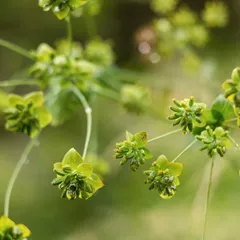
Chai Hu is a deputy ingredient in Ren Shen Bai Du San. This means it helps the king ingredient(s) treat the main pattern or it serves to treat a coexisting pattern.
4. Bupleurum Roots (Chai Hu)
Chai Hu releases the Exterior, reduces the fever, and expels the pathogenic influences. Together with Wild mint, they are especially useful in releasing pathogenic influences from the muscle layer.
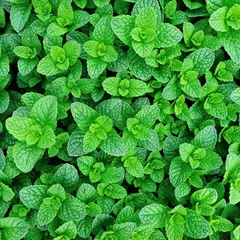
Bo He is a deputy ingredient in Ren Shen Bai Du San. This means it helps the king ingredient(s) treat the main pattern or it serves to treat a coexisting pattern.
5. Wild Mint (Bo He)
Bo He releases the Exterior, reduces the fever, and expels the pathogenic influences. Together with Bupleurum root, they are especially useful in releasing pathogenic influences from the muscle layer.
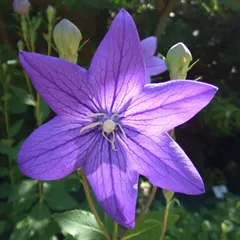
Jie Geng is an assistant ingredient in Ren Shen Bai Du San. This means that it either serves to reinforces the effect of other ingredients or it moderates their toxicity.
6. Platycodon Roots (Jie Geng)
Jie Geng invigorates Qi in the chest by directing it upwards, so as to ease chest discomfort. When combining with Qi descending herb Bitter orange, it is very power in invigorating Lung Qi, expelling Phlegm and stopping coughing, as they interact with Phlegm removing herb Hogfennel root.
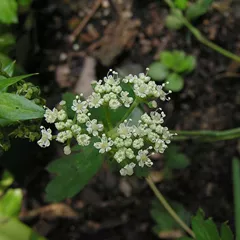
Qian Hu is an assistant ingredient in Ren Shen Bai Du San. This means that it either serves to reinforces the effect of other ingredients or it moderates their toxicity.
7. Hogfennel Roots (Qian Hu)
Part used: Dried root and rhizome
Nature: Cool
Qian Hu works together with Platycodon root and Bitter Orange in invigorating Lung Qi, expelling Phlegm, and stopping the coughing. It also works with Poria-cocos mushroom in transforming Phlegm and strengthening the Spleen.
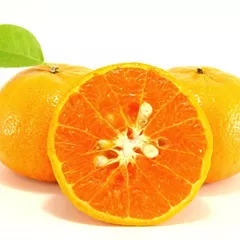
Zhi Ke is an assistant ingredient in Ren Shen Bai Du San. This means that it either serves to reinforces the effect of other ingredients or it moderates their toxicity.
8. Bitter Oranges (Zhi Ke)
Part used: Dried ripe fruit
Nature: Warm
Meridian affinity: SpleenStomach
Category: Herbs that regulate Qi
Zhi Ke invigorates Qi in the chest by directing it upwards, so as to ease chest discomfort. When combining with Qi descending herb Bitter orange, it is very power in invigorating Lung Qi, expelling Phlegm and stopping coughing, as they interact with Phlegm removing herb Hogfennel root.
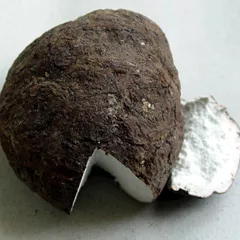
Fu Ling is an assistant ingredient in Ren Shen Bai Du San. This means that it either serves to reinforces the effect of other ingredients or it moderates their toxicity.
9. Poria-Cocos Mushrooms (Fu Ling)
Part used: Dried sclerotium
Nature: Neutral
Taste(s): Sweet
Meridian affinity: HeartKidneyLungSpleen
Category: Herbs that drain Dampness
Fu Ling transforms Phlegm and strengthens the Spleen, when combing with Hogfennel root. It also releases Dampness and promotes urination. It is able to tonify without causing Stagnation or retention of pathogenic influences.

Sheng Jiang is an assistant ingredient in Ren Shen Bai Du San. This means that it either serves to reinforces the effect of other ingredients or it moderates their toxicity.
10. Fresh Ginger (Sheng Jiang)
In general Sheng Jiang's main actions are as follows: "Relieves the Exterior and disperses Cold. Warms and circulates Qi in the Middle Burner. Calms a restless fetus and treats morning sickness. Treats seafood poisoning."
In the context of Ren Shen Bai Du San, it is used because it helps releasing the Exterior.
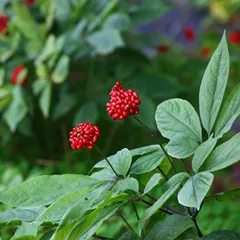
Ren Shen is an assistant ingredient in Ren Shen Bai Du San. This means that it either serves to reinforces the effect of other ingredients or it moderates their toxicity.
11. Ginseng (Ren Shen)
Part used: Dried root
Nature: Warm
Meridian affinity: HeartLungSpleen
Category: Tonic herbs for Qi Deficiency
Ren Shen strengthens the normal Qi so as to expel the pathogenic influences, helps creating Body Fluids to generate sweating, and strengthens the body's resistance to recurrent invasion, which prevents a relapse.
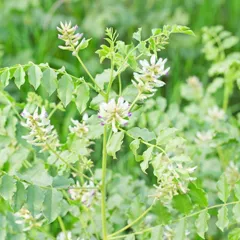
Gan Cao is an envoy ingredient in Ren Shen Bai Du San. This means that it directs the formula towards certain area of the body and/or harmonizes the actions of other ingredients.
12. Liquorice (Gan Cao)
Part used: Dried root and rhizome
Nature: Neutral
Taste(s): Sweet
Meridian affinity: HeartLungSpleenStomach
Category: Tonic herbs for Qi Deficiency
In general Gan Cao's main actions are as follows: "Tonifies the Basal Qi and nourishes the Spleen Qi. Clears Heat and dispels toxicity. Moistens the Lungsexpel phlegm and stop coughing. Relieves spasms and alleviates pain. Harmonizes and moderates the effects of other herbs."
In the context of Ren Shen Bai Du San, it is used because it harmonizes the actions of the other ingredients and assisting Ginseng in tonifying general Qi.
Ren Shen Bai Du San is used to treat Wind-Cold-Damp invading with Qi Deficiency
It's important to remember that herbal formulas are meant to treat patterns, not "diseases" as understood in Western Medicine. According to Chinese Medicine patterns, which are disruptions to the body as a system, are the underlying root cause for diseases and conditions.
As such Ren Shen Bai Du San is mostly used to treat the pattern "Wind-Cold-Damp invading with Qi Deficiency" which we describe below.
But before we delve into Wind-Cold-Damp invading with Qi Deficiency here is an overview of the Western conditions it is commonly associated with:
Common cold Influenza Mumps Bronchitis Dysentery Boils Dermatitis Urticaria Eczema
Again it wouldn't be correct to say "Ren Shen Bai Du San treats common cold" for instance. Rather, Ren Shen Bai Du San is used to treat Wind-Cold-Damp invading with Qi Deficiency, which is sometimes the root cause behind common cold.
Now let's look at Wind-Cold-Damp invading with Qi Deficiency, a pattern that TCM practitioners commonly treat with Ren Shen Bai Du San.
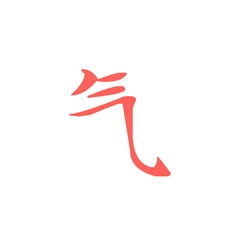
Qi is one of Chinese Medicine's vital subtances. Learn more about Qi in Chinese Medicine
Wind-Cold-Damp invading with Qi Deficiency
Pulse type(s): Floating (Fu), Soggy (Ru)
Tongue coating: Sticky coating, Thick white coating
Tongue color: Pale
Symptoms: Coughing Headaches Neck pain High fever Stiff neck pain extremities Focal distention Nasal congestion Sonorous breathing Feeling of fullness in the chest Severe fever and chills without sweating
Ren Shen Bai Du San is sometimes prescribed by TCM practitioners to treat Wind-Cold-Damp invading with Qi Deficiency. This pattern leads to symptoms such as high fever, severe fever and chills without sweating, headaches and neck pain. Patients with Wind-Cold-Damp invading with Qi Deficiency typically exhibit floating (Fu) or soggy (Ru) pulses as well as a greasy, white tongue coating.
In the pattern of Wind-Cold-Damp invasion coupled with Qi Deficiency, the body faces an external assault of pathogenic factors while grappling with an inherent weakness in its vital energy.
The Wind-Cold-Damp invasion manifests as an acute response with symptoms like high fever, intense chills, and... read more about Wind-Cold-Damp invading with Qi Deficiency
Formulas similar to Ren Shen Bai Du San
Jing Fang Bai Du San is 85% similar to Ren Shen Bai Du San
Xing Su San is 50% similar to Ren Shen Bai Du San
Shi Wei Bai Du San is 50% similar to Ren Shen Bai Du San
Sheng Yang Yi Wei Tang is 44% similar to Ren Shen Bai Du San
Jia Wei Xiao Yao San is 42% similar to Ren Shen Bai Du San
Ba Zhen Tang is 42% similar to Ren Shen Bai Du San

